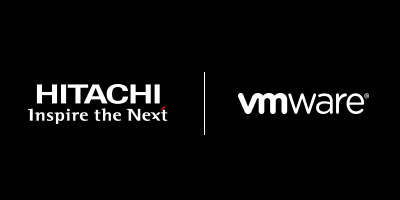When it comes to hybrid cloud and digital transformation, it’s all about application services and leveraging appropriate on-premise, service provider, and hyperscaler cloud resources and services seamlessly and efficiently.
From application development to IT and cloud management, organizations of all sizes contend with concepts and challenges to deliver operational efficiency and self-service resources for developers, business teams, and customers to use to build, retrofit and optimize their enterprises and accelerate new application services. The other aspect is ensuring newer modern cloud-native developed application services can be managed and integrated concurrently with existing application services and enterprise data repositories. Those system of record databases in organizations, mostly hosted in VMs, are not going away.

After all, the goal of hybrid cloud is to coordinate and maximize the use of different resources to support a wide range of workloads and application types and meet outcomes most efficiently.
There’s no shortage of destination cloud choices for application enablement for these new modern apps/cloud-native/container form factor delivered application services. What’s needed now, however, is an integrated approach to develop, manage, run, and operate all workloads and apps – from essential legacy to cloud-native. An integrated approach to lessen the complexities, improve operational efficiencies and deliver new and better revenue-generating or brand-improving services to customers.
VMware’s Tanzu is just such an approach that Hitachi Vantara is embracing as part of our Hybrid Cloud portfolio that features Hitachi Unified Compute Platform (UCP) at the forefront. The combination allows our customers to utilize data center, co-location/service provider, and cloud resources to provide a platform of services for operators, administrators, and developers.
Tanzu, with UCP-powered hybrid compute and storage, provides a stable and consistent operations platform that lets organizations use familiar tools and processes that have served current VM-based services very well. It enables self-service for developers to provision Kubernetes clusters, connect and secure application services across multi-clouds and provide operational performance advantages with observability and automation. At the same time, both developers and platform operators benefit by using the same platform for containerized and VM applications that run across all clouds.
Tanzu for Kubernetes Operators offers:
- Enterprise-ready Kubernetes runtime
- Multi-cloud Kubernetes management
- Full-stack enterprise observability
- End-to-end connectivity and security
- Integrated load balancing and ingress
- Familiar vSphere to take fast advantage of Kubernetes and scale to VMware Cloud.
Get more out of hybrid cloud with VMware Tanzu.
Of course, a software-defined, hardware-enabled application infrastructure across multi-clouds is still only as good as the equipment it runs on. To support a multi-cloud environment, reliability and the quality of the data services it can expose to the applications is paramount. Thus, the seventh item we can add to our list above, is the tight integration between Hitachi UCP, VMware Tanzu, and integrated storage data services across block and object.
Hitachi brings robust hardware and software to operationalize and perform lifecycle management. In addition, Hitachi Kubernetes plugins and datastore integrations ensure those application services can store and access the data that will be the lifeblood of new applications. So far, this is compelling, but it is a foundation to build on. Wait until we share what we are doing for modern apps that have an AI/ML component and our upcoming update on data center and service extensions as part of our hybrid cloud portfolio.
The important point with Tanzu on UCP, integrated with the VMware stack, consuming vSAN and Hitachi storage, and automated with integrations is that your infrastructure is now cloud-ready by design. This enables progressive organizations to offer a landing zone for developers that meets their autonomy needs while ensuring existing approved governance, compliance, and security needs can be leveraged to get VM + container enabling services to market efficiently. It automates away much of the complexity for all your developers, providing a consistent, reliable experience for your VMs and your containers. With integration in place today, your future data storage and application design decisions are less complex. Hybrid cloud aspirations can now be a reality.
Paul Morrissey is Director of Product Management, Converged Infrastructure, Hitachi Vantara.
Related
Be sure to check out Insights for perspectives on the data-driven world.


























































































